Are you Hygge or Biophilic?
To answer this question we have to go back a little so follow me
1. Biophilic design and our circadian rhythm.
Winter can be a challenging time of year for many people, with shorter days and colder temperatures, it’s easy to feel down and lethargic.
This lack of daylight can cause a disruption in our circadian rhythms, which are our body’s internal clock that helps to regulate our sleep, energy levels, and mood.
The circadian rhythm follows the sun.
In circadian rhythm lighting, sunlight changes from yellow in the morning, to blue at midday, to red in the afternoon evening . Humans respond to this changing exposure to light in its various forms.
Physically with a change in body temperature , heart rate and circadian functioning. The presence of blu light produces serotonin (sun high in the sky) and it’s absence produces melatonin (night). Getting the right balance of serotonin and melatonin has an impact on health and can be associated with sleep quality, mood, depression and even breast cancer.
This is especially true for those who suffer from Seasonal Affective Disorder (SAD), which is estimated to affect up to 10 million Americans.
What is Seasonal Affective Disorder (SAD)?
Seasonal Affective Disorder (SAD) is a type of depression that is thought to be related to the changes in the amount of daylight throughout the year. It is most commonly associated with the winter months, when the days are shorter and there is less exposure to sunlight. Symptoms of SAD include fatigue, difficulty sleeping, and changes in mood or appetite.
The cause of SAD is believed to be linked to changes in the body’s circadian rhythm – basically we don’t produce enough seratonin and too much melatonin.
Our internal circadian rhythm expresses itself as the natural cycle of sleeping and waking that follows the Earth’s rotation. For some people, the shorter days and longer nights of winter can disrupt this rhythm.
How to incorporate biophilic design to Combat SAD
Fortunately, there are a few things that you can do to help combat SAD and get the most out of the winter months. One of the most effective and natural methods is to use elements of biophilic design and optimize our circadian rhythms.
Tapping into our biophilic design toolkit to Incorporate natural elements into your home or workspace is a good start; this could mean bringing in plants, adding natural materials like wood, or placing furniture near windows to take advantage of natural light. Making the most of natural light is very important especially for the winter months.
Tips for Using Natural Light During Winter
When it comes to using natural light in winter, there are a few tips to keep in mind. First, make sure to take advantage of the sun’s position; place your desk closer to the window, or create a little reading corner so you can enjoy the daylight and maybe have a view on nature.
Use windows and mirrors to amplify of the light. Windows and mirrors are great for reflecting and diffusing the light, creating a brighter atmosphere. Additionally, you can use them to create an interesting play of light and shadow, which can be visually appealing and help to create a more inviting atmosphere.
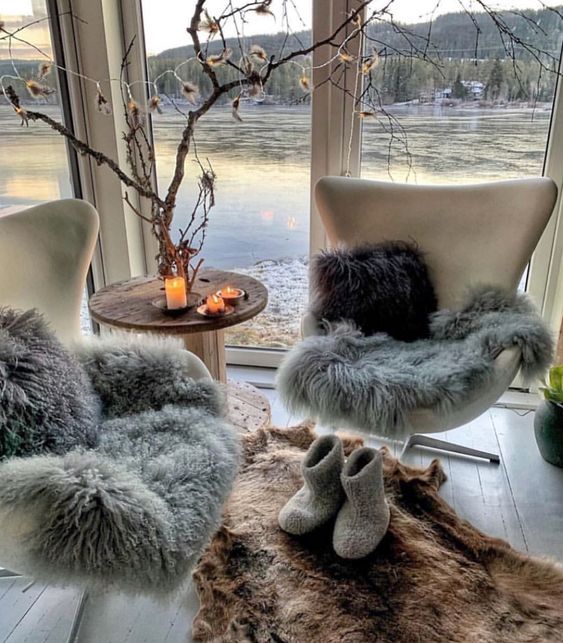
Secondly During winter, the sun rises later and sets earlier, so it’s important to make the most of the few hours of daylight that we get. Take advantage of the natural warmth of the sun, when it is up, maybe going out for a walk. Populations of northern hemisphere countries such as Iceland and Norway are very connected to nature and make the most of the few hours of daylight they have by really enjoying the fresh air and awesome scenery.

credits : walkcatwalk.com
In addition, it’s important to be mindful of your body’s natural rhythm. Try to go to bed and wake up at the same time each day, and make sure to get adequate amounts of sleep each night as suggested by CET This will help to keep your body’s circadian rhythm in balance, and can help to reduce the symptoms of SAD.
2. What is Hygge and How Can it Help with SAD?
Another way to help with SAD is to incorporate elements of the Scandinavian concept of Hygge into your home.
Hygge (pronounced “hoo-gah”) is a Danish term that is used to describe a feeling of coziness and contentment.
Hygge is about an atmosphere. It’s about being with the people we love. A feeling of home and that we are safe. It’s about the little things in life. It is an opportunity to unwind and take things slow.
Hygge is often associated with winter, and is best achieved by creating a warm, inviting atmosphere in your home. It is a concept, a lifestyle and can be interpreted in a different way for each person; however, the outcome it brings is always a sense of relaxed wellbeing. And it is this underlying concept that dominates a lot of the Danish society. Hygge season comes at its peak during the winter months
The idea is to create a space that is inviting and comforting, and that makes you feel at home. Like warm socks. A dim-lit room. A hot cup of tea in your favorite mug.This can help to reduce feelings of stress and depression, and can be a great way to combat the winter blues.

Feet in wool socks warming by cozy fire
3. Incorporating Biophilic Design and Hygge Into Your Home
If you’re looking to add some Hygge to your home, there are a few things that you can do, and we can take examples of biophilic design. One of the most important is to add soft, inviting textures to your space. This could mean adding throws and pillows to your furniture, soft wool or even furs or rugs of natural fibre on the floor.
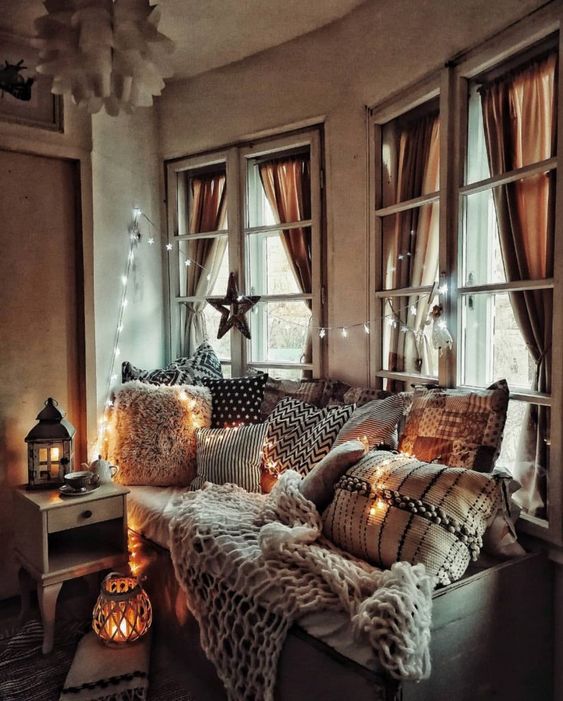
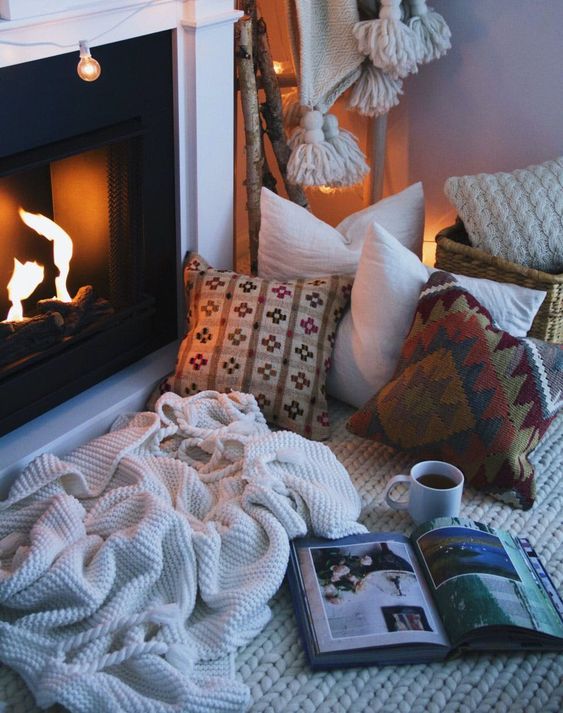
You can also incorporate warm colours (rigorously mineral paint) into your decor. This could be anything from reds and oranges to muted yellows and greens. These colours can help to create a warm, inviting atmosphere that is perfect for winter. Think “vin brulè” or tea.
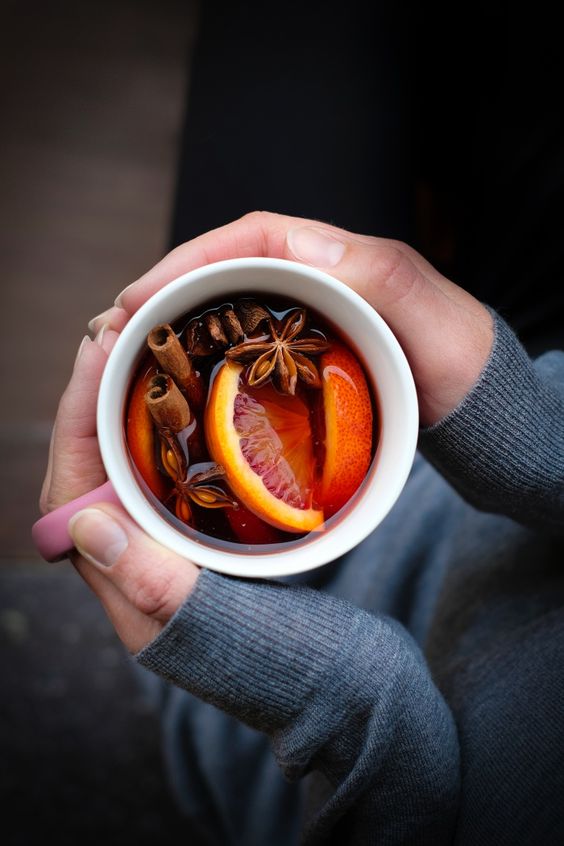
In addition, you can add elements of nature to your home. This could mean bringing in plants, displaying artwork that features nature scenes, or adding natural materials like wood. These elements will help to create a more soothing atmosphere and reduce stress.
Scent and taste are also important for a Hygge home , so make sure you get the baking tray out and roll out the ginger biscuits and cake – not only is it delicious to eat but it is also inviting to smell.
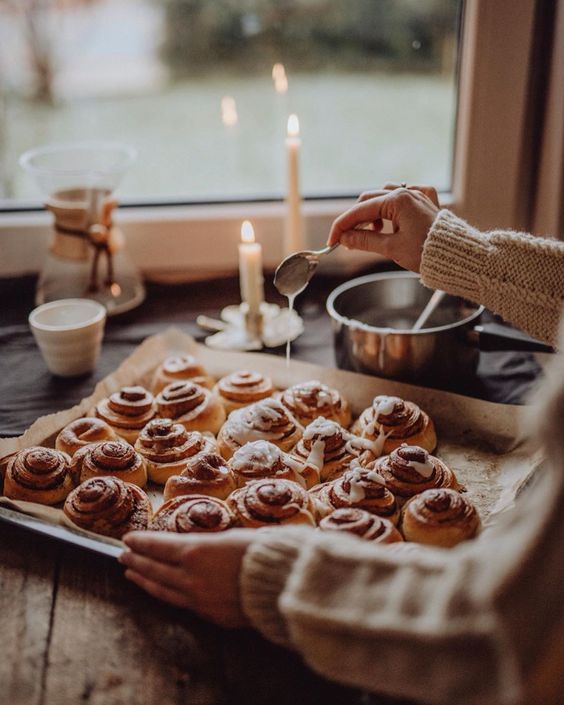
3.1 Candles
Finally, going back to light candles are very important both to create more light and to create a more Hygge atmosphere.
They are especially effective at creating a warm, inviting atmosphere, and they can be used to make a space feel cozy and inviting. They also add a touch of ambience to any room.
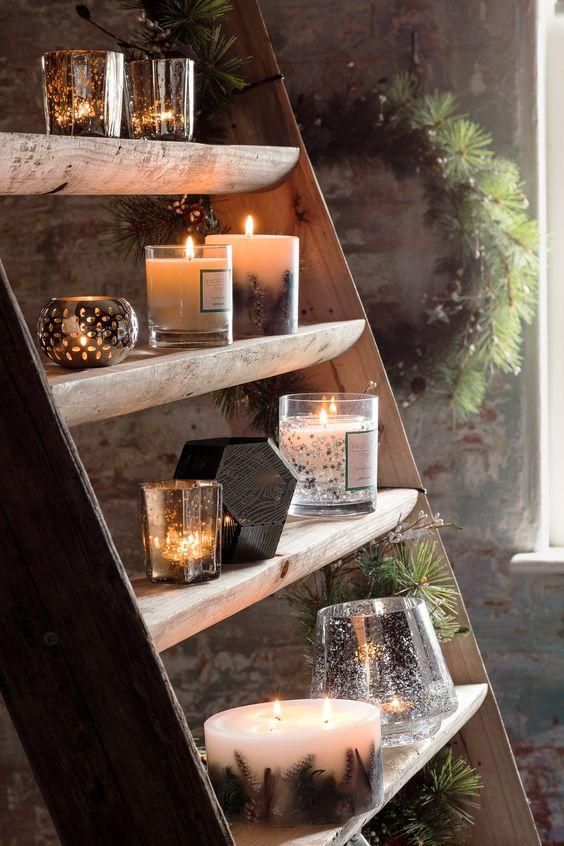
sourcehomeartisan
Northern countries love candles, the more the better.
However, from personal experience, make sure you do not mix scented candles with the delicious smell of your baking , it can be confusing!
One last recommendation to sum everything up – create your cozy reading nook.

Conclusion
Winter can be a difficult time of year for many people, especially for those who suffer from Seasonal Affective Disorder (SAD). Fortunately, there are a few things that you can do to help combat SAD and make the most of the winter months.
Biophilic design can help to reduce stress and improve mood, while the Scandinavian concept of Hygge can help to create a warm, inviting atmosphere in your home. In addition, lighting solutions like candles and lamps can be used to maximize the amount of light in your home, which can help to keep your body’s natural circadian rhythm in balance.
So don’t let the winter blues get you down, you can unlock the magic of winter light and make the most of the season.